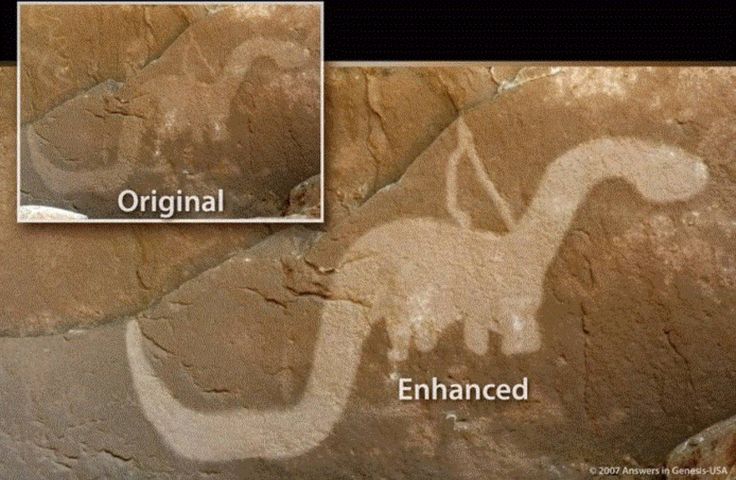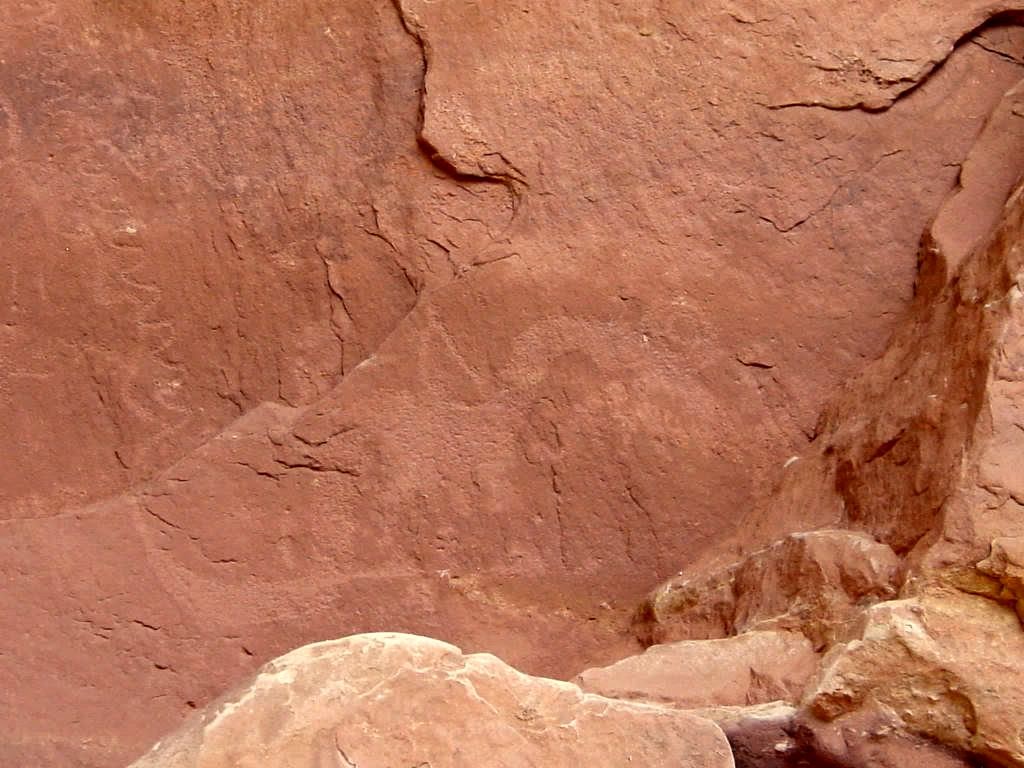Approximately 65.5 million years ago, the last of the non-avian dinosaurs were eradicated during one of the planet’s most devastating extinction events, leaving behind only their bones and remnants in the rock. Despite this, some individuals assert that humans actually coexisted with dinosaurs. Young Earth creationists often distort natural history to align with their strict interpretation of Genesis, claiming that humans lived alongside sauropods, tyrannosaurs, ceratopsians, and other dinosaurs within the past 6,000 years.

To bolster their remarkable assertions, certain creationists reference what they consider to be sculptures, carvings, and artistic depictions of dinosaurs created by ancient cultures worldwide. Most of these claims have been debunked as either forgeries or misinterpretations, yet creationists persist in using them as proof for their unconventional understanding of Earth’s history.
Among the frequently cited examples is a petroglyph resembling an Apatosaurus-like sauropod located on Kachina Bridge in Utah’s Natural Bridges National Monument. The fundamentalist group Answers in Genesis states, “The petroglyph of a sauropod dinosaur clearly has significant implications—indicating that dinosaurs were indeed known to men after the Flood until they eventually died out and became (apparently) extinct.” This assertion rests on the belief that the petroglyph was deliberately carved by humans to represent a specific animal that was seen in the recent past. However, a recent study by paleontologists Phil Senter and Sally Cole effectively dismantles this notion.

Have you ever gazed at passing clouds and imagined seeing an animal shape, or noticed the “man in the moon”? These instances exemplify pareidolia—recognizing familiar shapes or patterns where none exist. This phenomenon also accounts for the supposed “dinosaur” depicted on Kachina Bridge. Upon thorough examination by Senter and Cole, what was thought to be a “sauropod dinosaur” was revealed to consist of various separate carvings and mud stains. It is certainly not a representation of a single creature, and when viewed closely, it bears no resemblance to a dinosaur at all. The distinct carvings and mud stains appear dinosaur-like only to those eager to find one.
While the alleged sauropod is the most notable example, it is not the only supposed dinosaur carving that creationists claim to have identified on the bridge. Three additional dinosaur representations have been suggested, but Senter and Cole easily refuted these claims as well. One so-called “dinosaur” was merely a mud stain; a proposed Triceratops was simply a collection of petroglyphs that do not depict animals, and what was described as a Monoclonius carving turned out to be nothing more than an ambiguous squiggle. In reality, there are no dinosaur carvings on Kachina Bridge.

The petroglyphs at Kachina Bridge were not forgeries or deceptions. They were created by people who once inhabited the area, but there is no evidence suggesting that any of the carvings represent actual animals, either living or extinct. What creationists believed they saw in the rocks has proven to be an illusion, leaving one to ponder how many will acknowledge their error.
